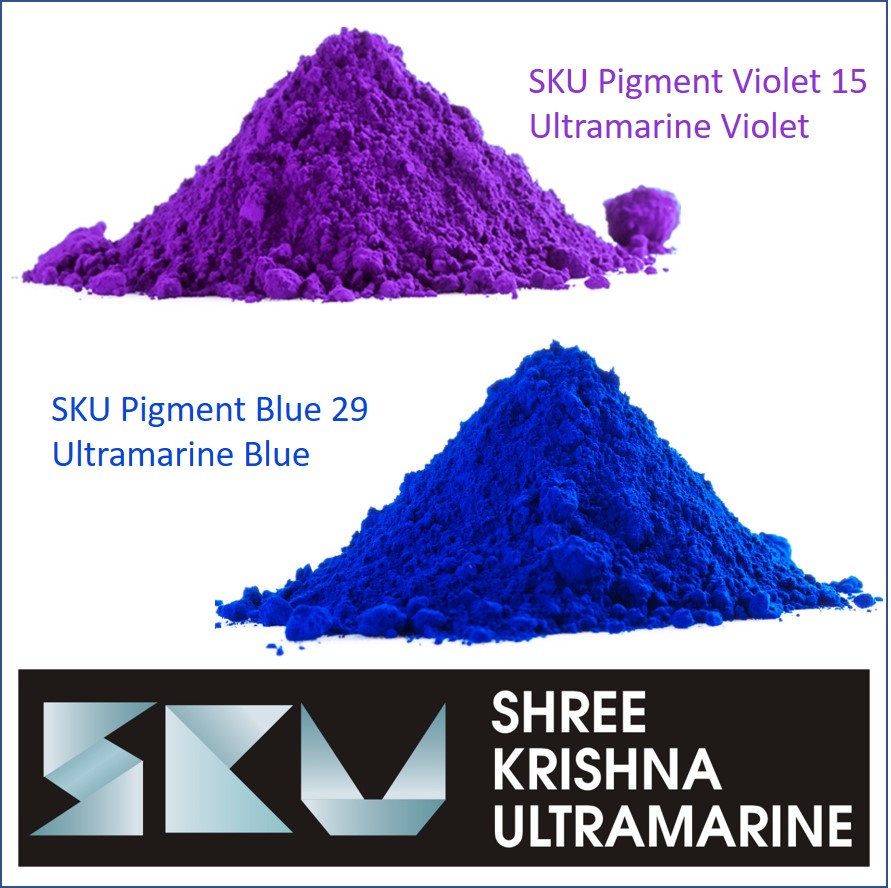Why Ultramarine Pigments Remain the World’s Most Trusted Blue

For generations, color has defined art, design, and industry. Among the most significant hues, Ultramarine is revered for its vivid tones. Today, companies like SKU Pigments produce high-quality Ultramarine pigments, including Ultramarine Blue, Ultramarine Violet, Pigment Blue 29, and Pigment Violet. From industrial coatings and packaging, Ultramarine has become the mainstay of modern blue pigments.
The Journey of Ultramarine Through Time
The name Ultramarine comes from the Latin “ultra mare,” meaning “beyond the sea,” a reference to lapis lazuli originally imported from Afghanistan. For centuries, it was a rare treasure, used by Renaissance masters to paint sacred art. It symbolized purity and heaven.
Modern chemistry made it possible to manufacture Ultramarine pigments, bringing the once-exclusive shade into global industries. This breakthrough turned a precious rarity into a accessible solution for countless sectors.
Why Ultramarine Blue Leads the Industry
Ultramarine Blue pigments—the synthetic form of Pigment Blue 29—are the most widely used. Known for their lasting vibrancy, they are sustainable and reliable. They are used in:
• Paints and coatings for rich tones.
• Plastics and rubber, thanks to chemical safety.
• Inks and printing, where clarity is vital.
• Cosmetics, given their skin-safe quality.
This balance of Ultramarine performance and safety keeps Ultramarine Blue among the global color leaders.
Exploring the Subtlety of Ultramarine Violet
Ultramarine Violet offers delicate hues that appeal in decorative paints. Pigment Violet derived from Ultramarine is eco-safe, making it ideal for children’s toys.
Its muted shade enhances luxury packaging, while ensuring longevity without chemical breakdown.
Industrial Uses of Ultramarine Blue
Pigment Blue—particularly Ultramarine Blue pigments—remains a trusted industrial choice. It offers weather resistance for:
• Vehicle coatings with resistance to fading.
• Packaging, ensuring stable shades.
• Decorative plasters, adding beauty and durability.
This cross-sector utility ensures Pigment Blue’s staying power.
The Benefits of Blue and Violet Pigments
• Non-Toxic & Safe: Ideal for cosmetics and toys.
• Heat & Light Resistant: Stable in outdoor use.
• Eco-Friendly: Green production methods.
• Cost-Effective: Budget-friendly industrial choice.
• Versatile: Applicable everywhere color matters.
Ultramarine in Modern Industries
1. Paints & Coatings: Durable architectural shades.
2. Plastics & Rubber: Safe for packaging.
3. Cosmetics: Skincare-safe pigments.
4. Construction: Flooring products.
5. Printing & Inks: Precision printing.
SKU Pigments: Global Ultramarine Experts
SKU Pigments leads the market, offering innovation in Ultramarine pigments. Their product portfolio includes:
• Pigment Blue 29 for industrial-scale use.
• Ultramarine Violet and Pigment Violet for elegance and subtlety.
• Custom shades for specialized markets.
Their reputation is built on consistent quality and sustainable methods.
Ultramarine: From Heritage to High-Tech
From lapis lazuli origins to an eco-friendly modern solution, Ultramarine has evolved with industries. Whether it’s the classic brilliance of Ultramarine Blue, the subtle elegance of Ultramarine Violet, or the dependability of Pigment Blue 29, Ultramarine pigments remain unrivaled.
With SKU Pigments as a trusted partner, industries gain beauty, safety, and performance. As demand for sustainable pigments rises, Ultramarine will remain dominant in global markets.
Frequently Asked Questions
1. What is Ultramarine?
A vibrant pigment from lapis lazuli, now produced synthetically.
2. What is Pigment Blue 29?
The synthetic form of Ultramarine Blue.
3. Where is Ultramarine Violet used?
In eco-friendly and children’s products.
4. Are Ultramarine pigments safe?
Trusted globally for safety.
5. Why choose SKU Pigments?
Trusted supplier worldwide.